
Dr. Akeel Al-yacopy
M.B.Ch.B
Baghdad
M.R.C.P London
M.R.C.P UK
F.R.C.P Glasgow
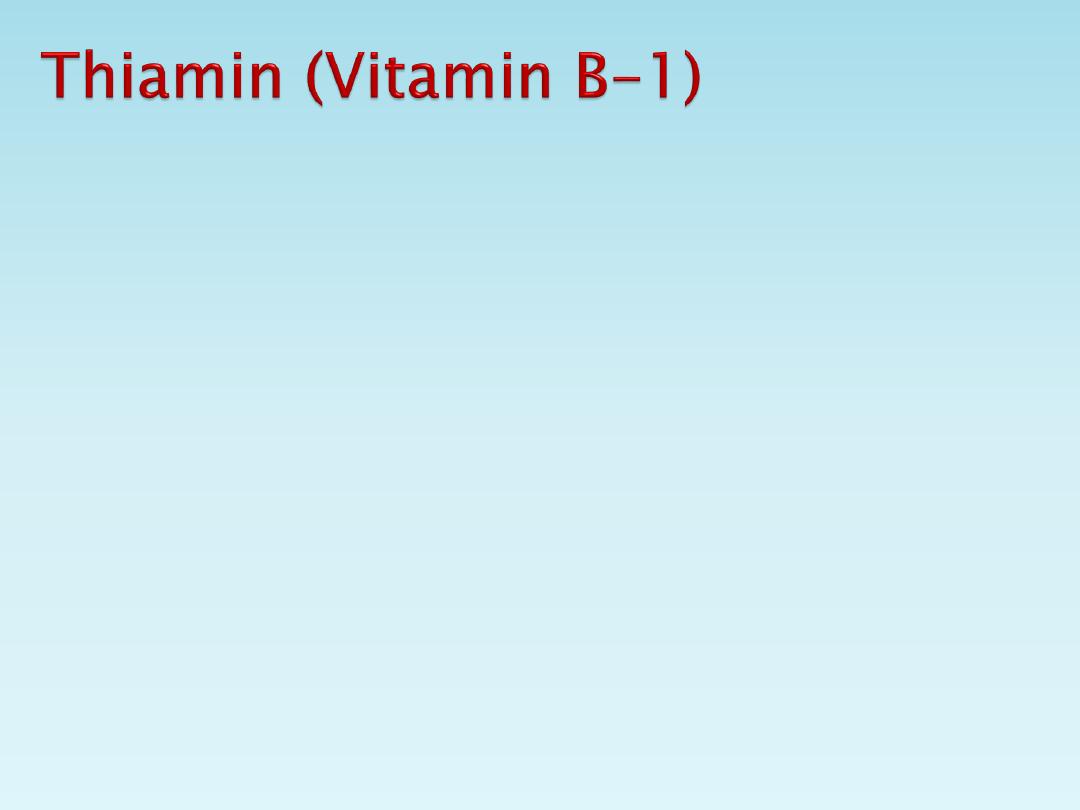
Thiamin plays a part in the metabolism of carbohydrates,
alcohol, and branched chain amino acids.
The body contains only 30mg (30 times the daily
nutritional requirement) and deficiency starts after about a
month on thiamin free diet, sooner than for any other
vitamin.
The requirements are proportional to the non-fat energy
intake. The two principal deficiency disease are Beriberi
and Wernicke-Korsakoff syndrome.
*Daily requirement for healthy adults: 1mg.
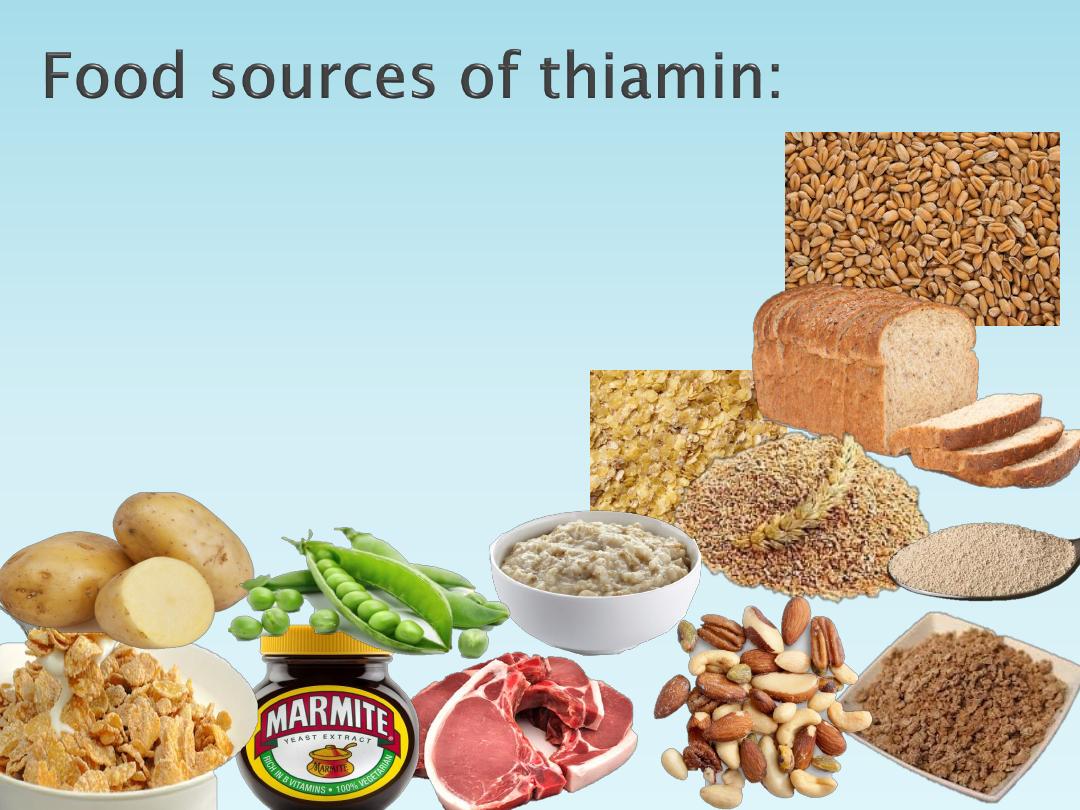
Whole wheat and whole meal bread.
Wheat germ and bran.
Yeast, mycoprotein, nuts.
Pork, bacon, marmite.
Fortified breakfast cereals.
Oatmeal, potatoes, and peas.

Is now rare in the countries where it was originally
described (Japan, Indonesia, and Malaysia).
In western countries occasional cases are seen in
alcoholics.
-Clinical features:
High output cardiac failure with few ECG changes
and prompt response to thiamin Rx alone.
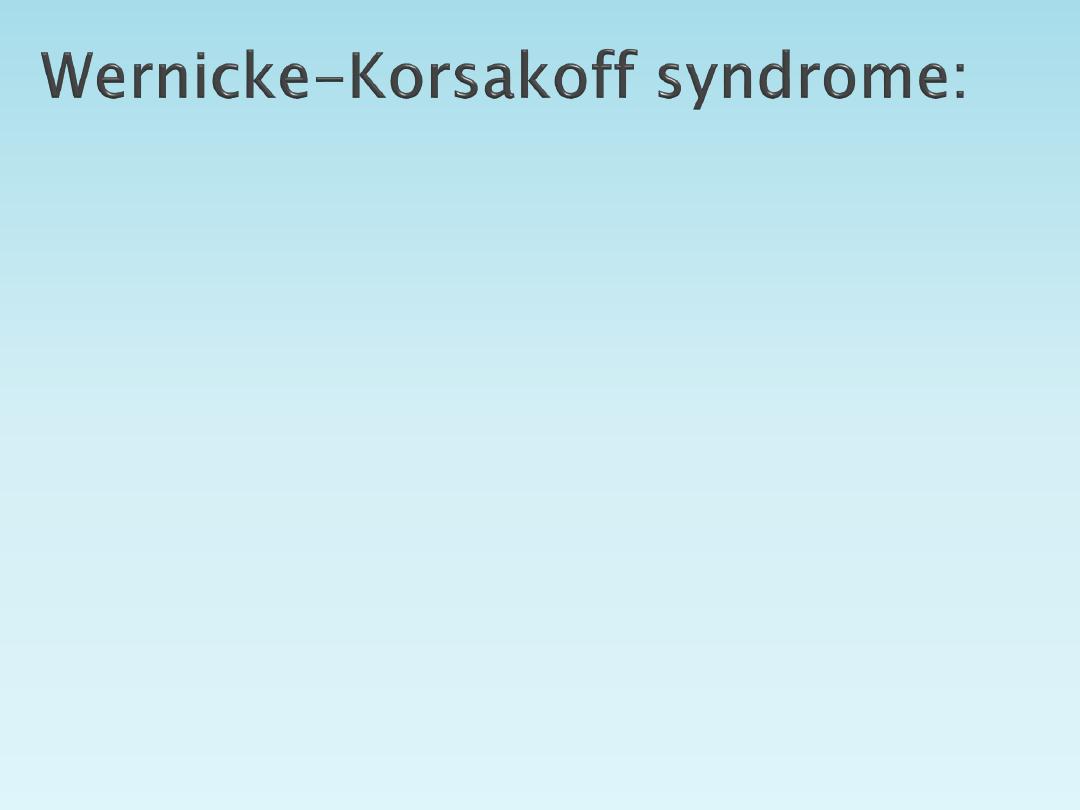
Is usually seen in alcoholics, it can also occur in people
who fast (such as hunger strikes) or who have persistant
vomiting (as in hyperemesis gravidarum).
Early recognition is important.
The opthalmoplegia and lowered consciousness respond
to thiamin (50mg IM) in two days, but if treatment is
delayed memory may never recover.
Patients on regular haemodialysis should routinely be
given small supplements of thiamin and other water
soluble vitamins. Also should be given to people with
prolonged vomiting or prolonged gastric aspiration, or
those who go on long fast as well as alcoholics.
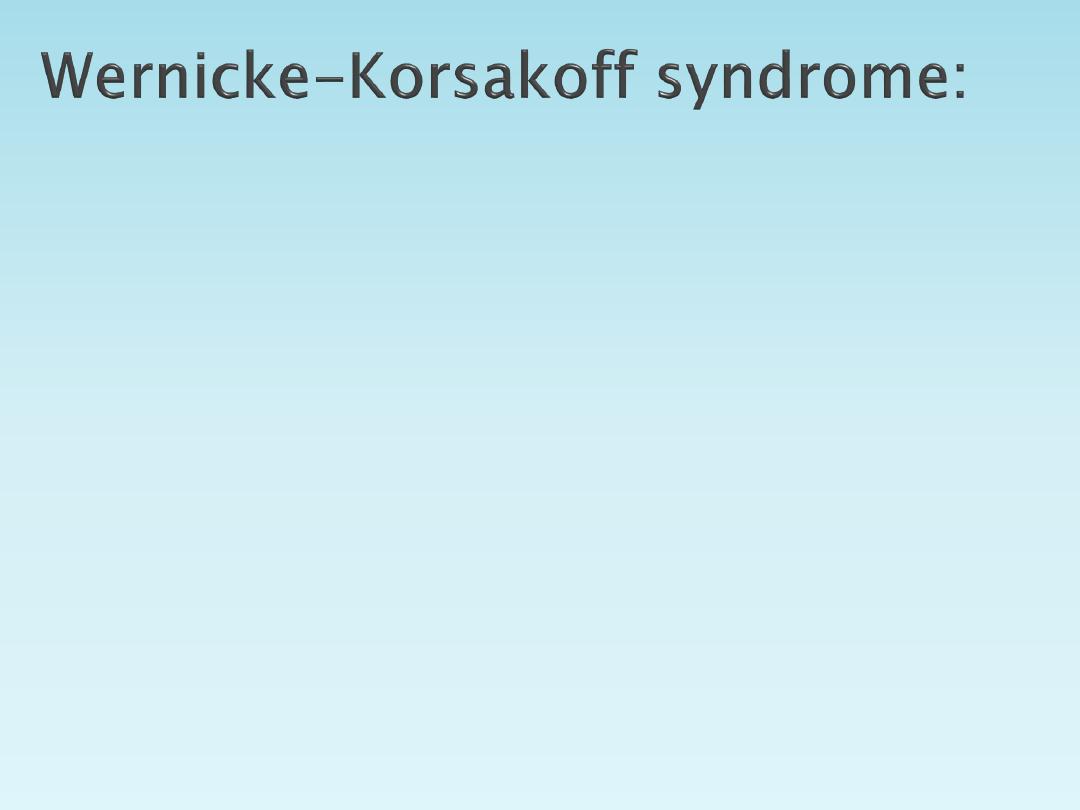
Stupor or apathy.
opthalmoplegia. (lateral or vertical).
Nystagmus.
Ataxia.
Wernicke’s encephalopathy responds rapidly to thiamin
but Korsakoff’s psychosis responds slowly or not at all.
The pathological findings in Wernicke’s encephalopathy
and Korsakoff’s psychosis are similar (Capillary
haemorrhage in the mamillary bodies and round the
aqueduct in the midbrain).
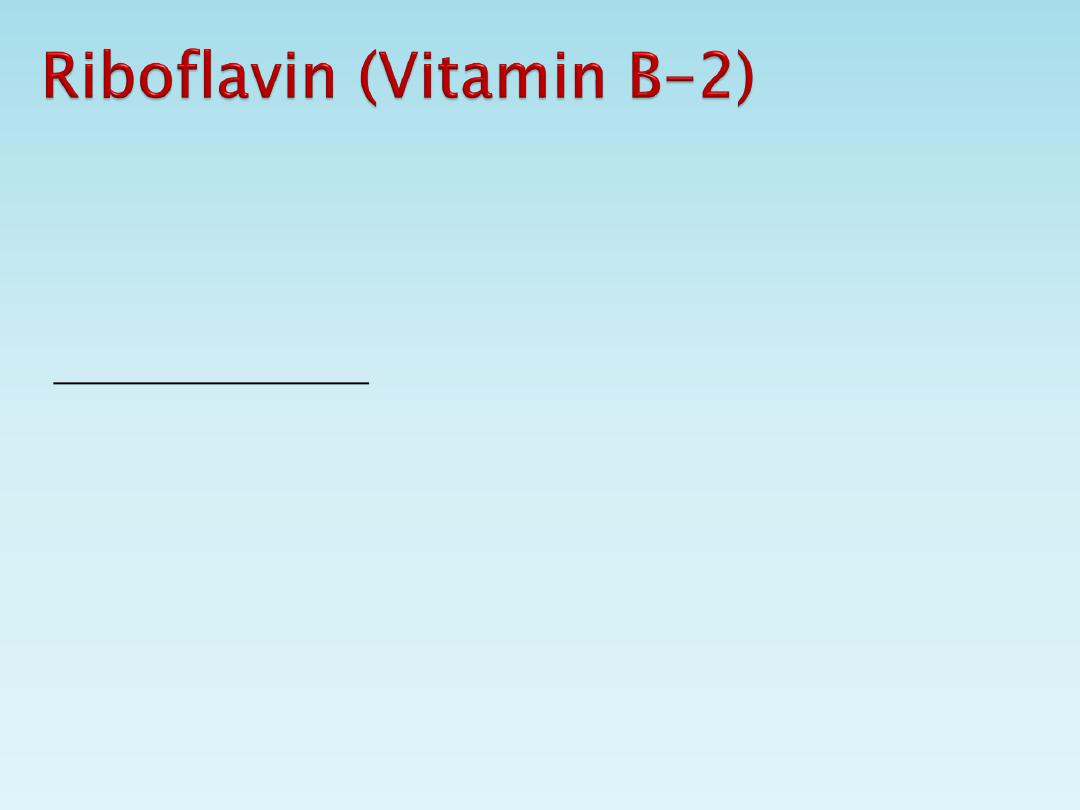
Riboflavin, a yellow substance with green fluorescence in
the coenzymes flavin mononucleotide (FMN) and flavin
adenine dinucleotide (FAD), has vital roles in cellular
oxidation.
Deficiency causes:
Angular stomatitis, Cheilosis, Atrophic papillae on the
tongue, Nasolabial dyssebacia, Anaemia.
There are no real body stores of riboflavin, but the liver
contains enough in coenzyme form to withstand depletion
for about three months.
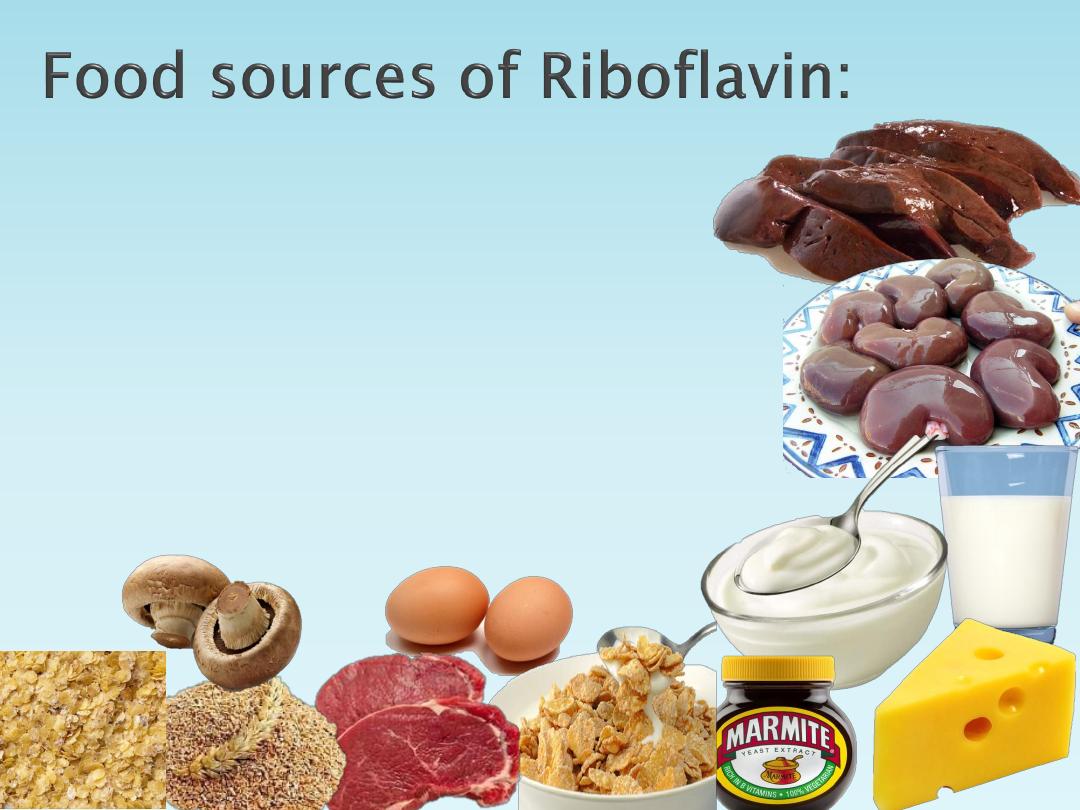
Liver, kidney (richest sources).
Milk, yoghurt.
Cheese, marmite.
Fortified cereals.
Eggs, beef.
Wheat bran.
Mushrooms, wheat germ.
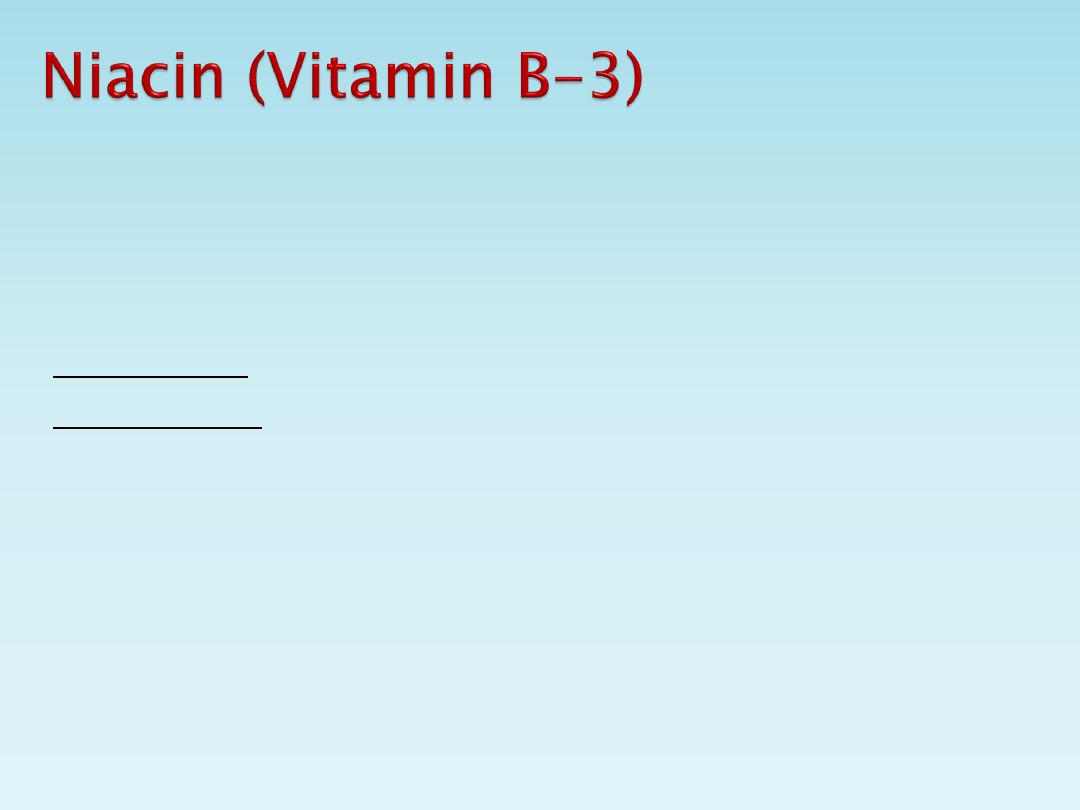
Niacin (nicotinamide and nicotinic acid) is the part of the
coenzymes nicotinamide adenine dinucleotide (NAD) and
nicotinamide adenine dinucleotide phosphate (NADP) that
has to be supplied by diet. In addition the amino acid
Tryptophan has a minor metabolic pathway via
Kynurenine to nicotinamide, about 1/6 of ingested
Tryptophan goes this way.
Tryptophan makes up about 1% of dietary proteins, so 70g
protein a day provides about 12mg niacin equivalents
towards the total niacin requirement of 15-18mg a day for
adults.
*Daily requirement 15-20mg (part replaceable by
Tryptophan in proteins).
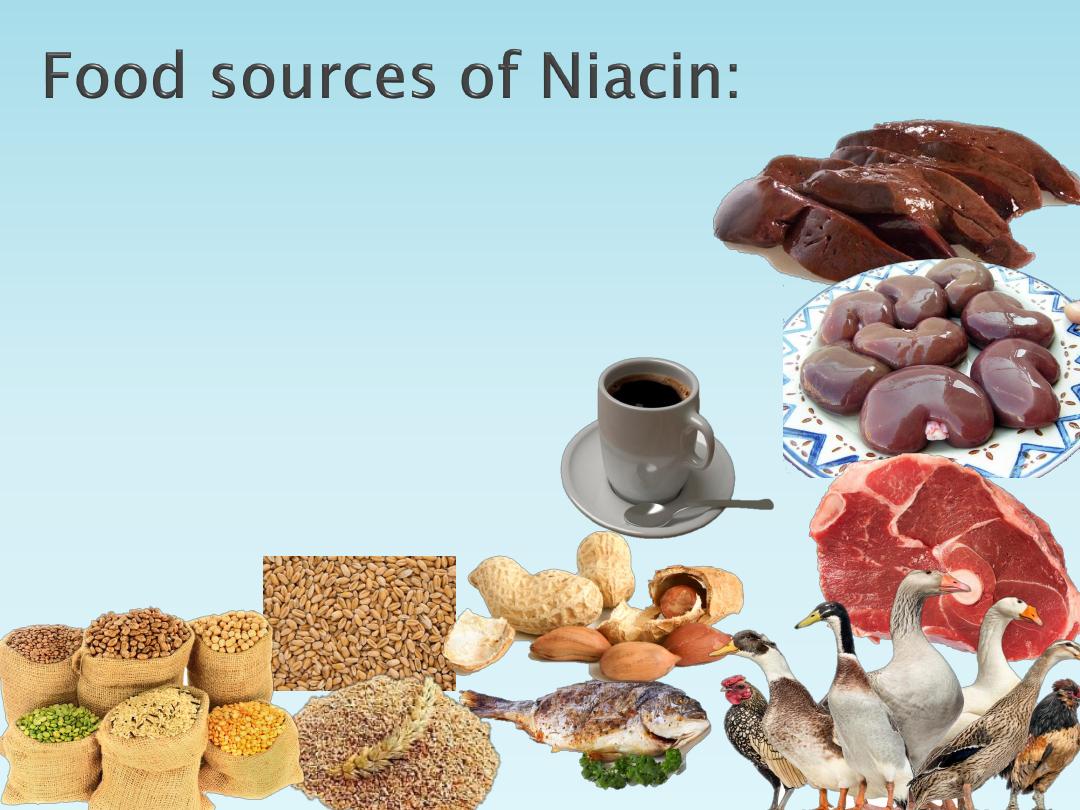
Liver, kidney (richest sources).
Meat, poultry.
Fish, peanuts, bran, pulses.
Whole meal wheat.
Coffee.

It is caused by niacin deficiency, it is now rare except in
areas such as parts of Africa where subsist on maize and
little else. In maize the niacin is in a bound form
biologically unavailable (except when cooked after
pretreatment with Calcium hydroxide water, the
traditional Central American way) and Tryptophan amino
acid in it is limited (unlike other cereal).
Secondary Pellagra may occur in patients with chronic
renal failure n low protein diets or dialysis, also Coeliac
disease. Another rare cause is Hartnup disease, a recessive
inborn error of Tryptophan absorption.

Pellagra causes:
(Dermatitis, diarhoea, dementia).
Rx: 100mg nicotinamide orally tid or by IM, the response
is usually rapid within 24 hours.
Above the nutrient dose nicotinic acid (not amide)
produces cutaneous flushing from histamine release at
doses of 100mg/day or more. It has been used for
Chilblains.
At dose of 3g/day or more it inhibits lipolysis in adipose
tissue and lowers plasma cholesterol and triglyceride’s
concentration. It has been one of the treatments for
combined hyperlipidaemia (hypercholesterolaemia +
hypertriglyceridaemia).

Thank you
for your attention.
